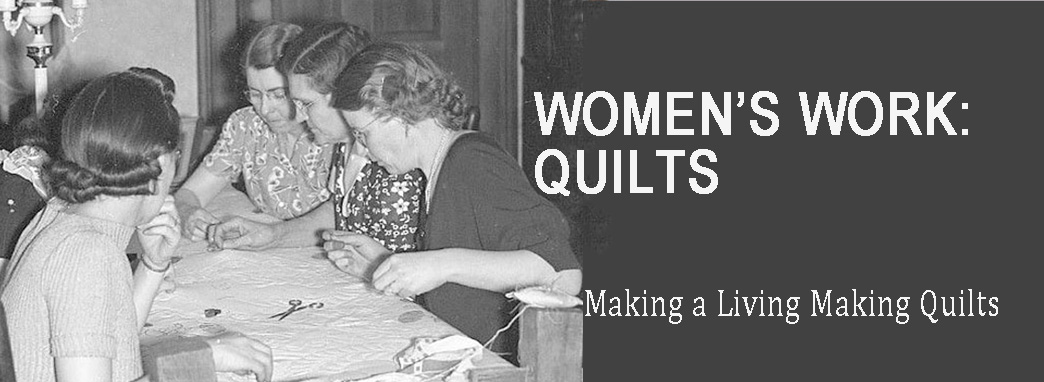Shopping
https://womensworkquilts.blogspot.com/2018/02/fancy-stores-in-philadelphia.html
Woman outside a hardware store in New York about 1870
With so many resident customers New York might be able to support some mid-19th-century specialty stores. The city was the center of retail and wholesale buying so out-of-town shoppers came to Manhattan too.
I read the papers.
In 1846 Henry Lawrence advertised his new
Fancy Needle-Work Emporium.
"Importers of zephyr wool, canvass, patterns, beads....selected by himself in Europe."
He was located on John Street near Broadway.
Berlin work chair seat embroidered over canvas
with zephyr wool (light wool yarns)
Berlin work was a mid-century needlework fad.
Three years later Henry was with Lawrence Brothers at the same
location with the same stock:
"Zephyr and Fancy Wools, Perforated Boards..."
The Lawrences specialized in Berlin work supplies or needlepoint wools and cards.
The customer base seems to have been wholesale buyers from rest of the country.
Berlin Work book cover partially embroidered on blue perforated cardboard
The Lawrences had some competition around the corner on Broadway from
Madame Alixe Doubet and her fancystore.
Broadway was the center of retail in Madame's day.
When fashion moved to Fifth Avenue, the shop moved too.
After Madame died in 1874 the shop continued under Miss A.E. McCarthy.
A receipt from the 1880s.
"Miss A.E. McCarthy successor to Mme Lauzin"
This customer Ms. Kimball was from out of town, Salem, Massachusetts. Among the items on her bill: Ribbon, fringe and tinsel cloth & a cloth hamper (some kind of container to keep fabric?) for $9.
The shop also made up a pin cushion (for $5.50) and made up a red cushion (for $7) for her.
Beaded pincushion
We presume Ms Kimball did the embroidery and they finished the projects---a service needlework shops still offer.
Diggs's Lace Bonnet Store in Boston 1852.
It looks just like Sarah's Fabrics in downtown Lawrence on a game day.
There are several things that fascinate me about these fancy shops.
One---that they are so similar to our needlework shops today.
By 1860 Alixe and Francois were no longer living above their store
and she listed her business as French fancygoods
Two---I keep running into French immigrants. We forget how French this country was before the Civil War. We offered refuge to many fleeing for their lives. They tended to be the upper class (France did not have much of a middle class) and they were broke. They had to work. Even the future King Louis Phillipe who lived in the U.S. for four years worked as a teacher at one point in his exile. Their skills were minimal---just class, French connections, manners and good taste. Alixe Doubet parlayed that into a career in the needlework business.
Miss A.E. McCarthy's trade card. She offered
"All kinds of Embroideries, Monograms and Crests made to order.
Patterns and designs made to order."
Hand-painted Berlin work pattern of a Newfoundland dog,
imported from a German state.
Collection of the Cooper-Hewitt.
Three---They drew patterns. "Patterns and designs made to order." Did they offer patchwork patterns too?

































